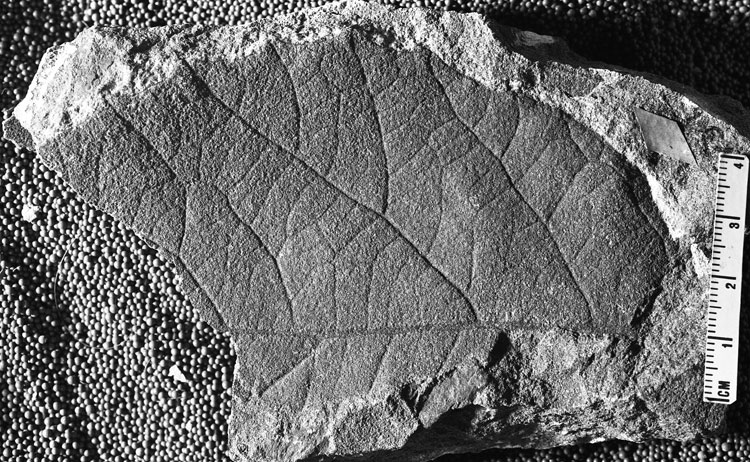Locality
From Hollick (1930) (p. 90)
"Yukon River, north bank, about 3 miles below Blatchford's mine (original No. 3AH21); collected by Arthur Hollick and Sidney Paige in 1903 (lot 3260)."
Description
From Hollick (1930) (p. 90)
"Leaves elliptical-ovate, asymmetric (?), about 13 centimeters in length by about 9 centimeters in width through the middle, remotely and broadly triangular-dentate from below the middle upward, irregularly wavy margined toward the base; apex turned or bent sideways; nervation pinnate, craspedodrome; Secondary nerves about six or seven on each side, irregularly spaced and disposed, forked or branched, mostly curving upward at various angles of divergence close to the midrib, bending backward toward the margin, the lowest on each side simple, flexuous, extending to and gradually thinning out and disappearing in the margin."
Remarks
From Hollick (1930) (p. 90)
"These leaves are hardly to be distinguished from Paracredneria fritschii Richter (1905; 1905) (p. 15; p. 15, pl. 2, fig. 14; pl. 3, fig. 9) and I am inclined to believe that they may eventually be determined to belong to that species. Unfortunately, both Richter's figures and ours represent imperfect specimens, and accurate comparison is impossible. It may be seen, however, that they possess certain peculiar and characteristic features in common. They are apparently asymmetric or inequilateral, one side being broader than the other; the secondary nerves are unequal in number on the two sides, and those on one side diverge from the midrib at acute angles, while those on the other diverge at obtuse angles; and the apex is bent or turned to one side. By comparing Richter's Figure 9 and our Figure 2 these features in common may be seen to be strikingly exemplified.
A species that is somewhat suggestive of ours is Credneria? pachyphylla Knowlton (1899) (p. 742, pl. 101, fig. 6) from the Eocene of the Yellowstone National Park, which is apparently a Paracredneria with entire margin."
